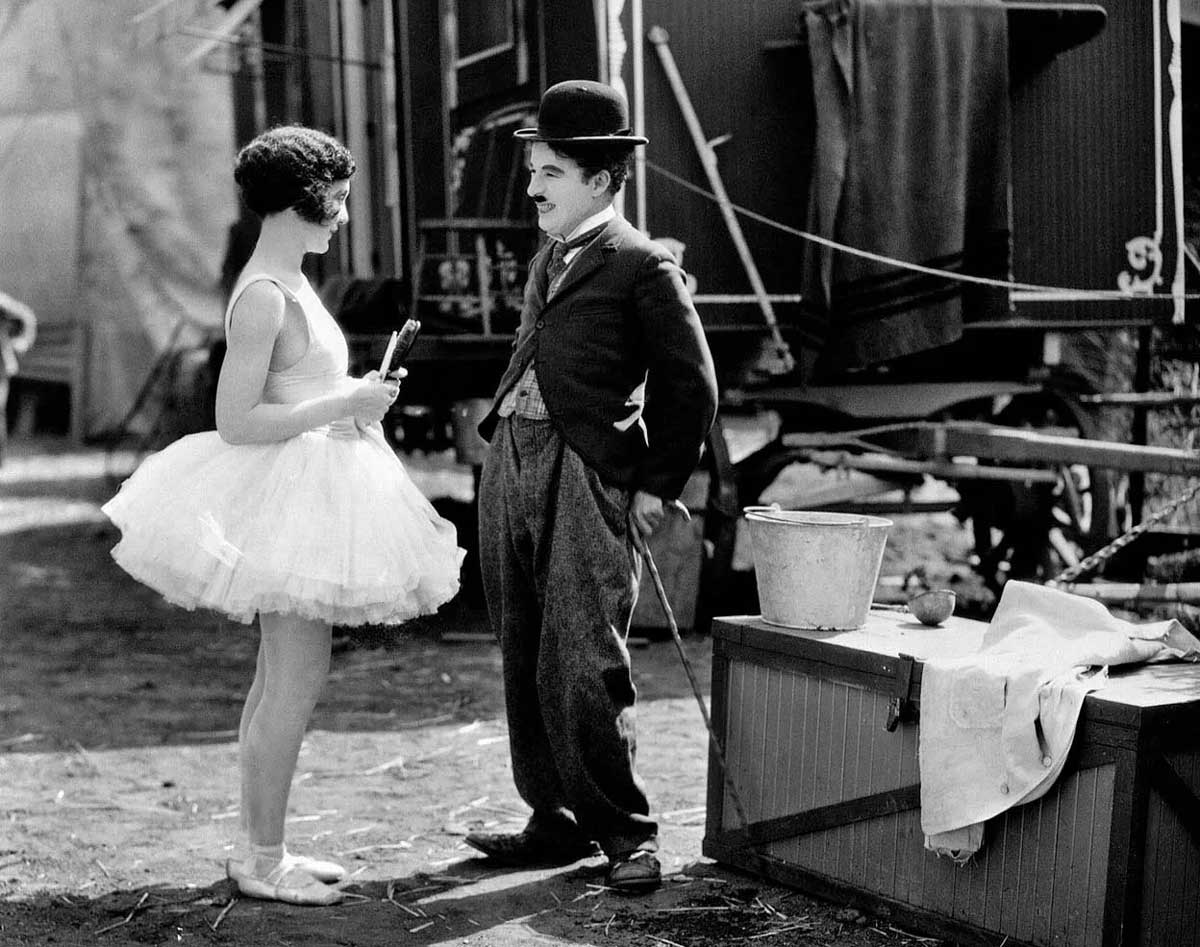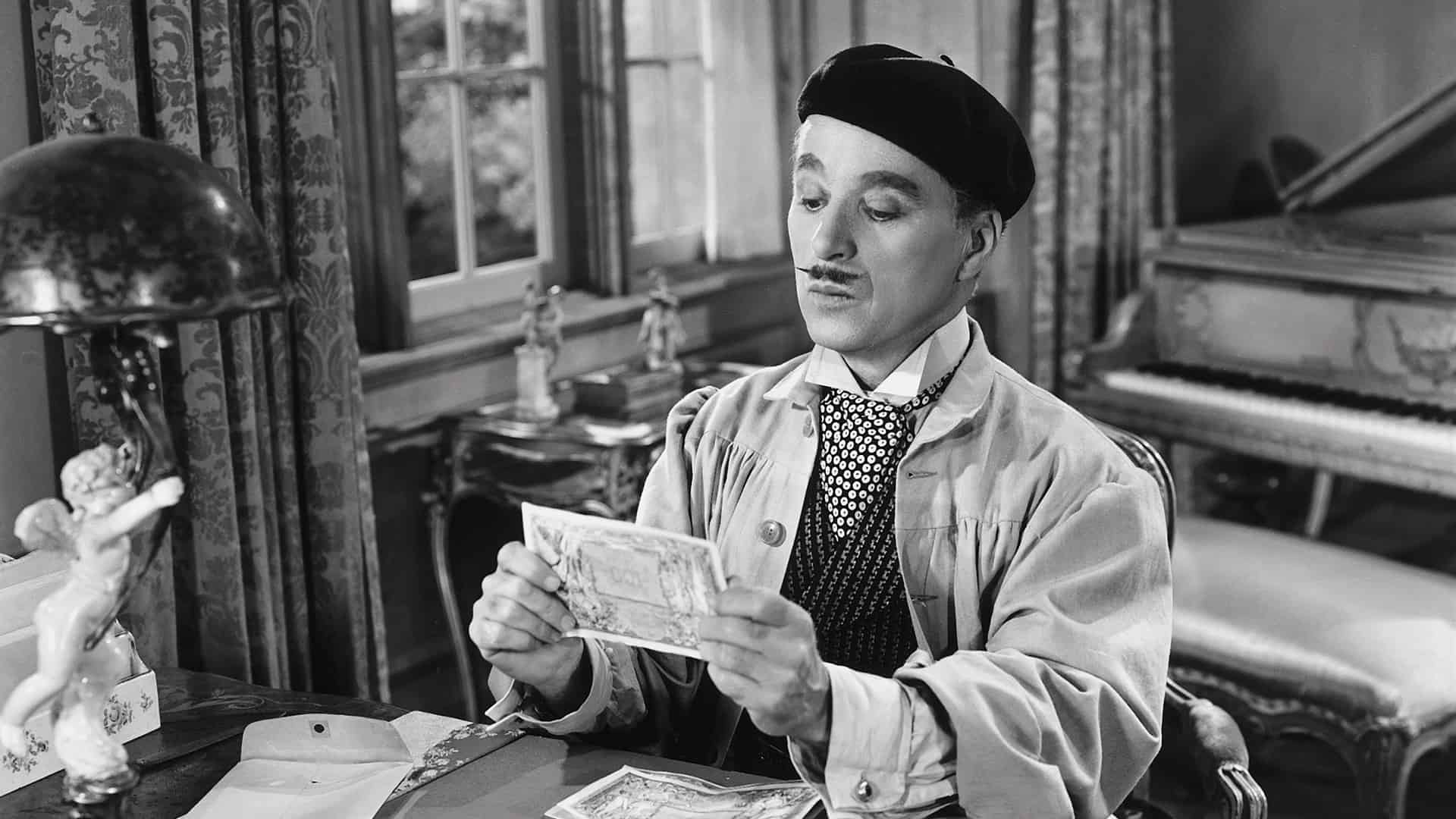The following article was published at the time of Chaplin’s death in the periodical La Città Futura by Pietro Ingrao, then the president of the Italian Chamber of Deputies. Although one of the most engaged leaders of the Italian Communist Party, Ingrao has kept up his interest in film, which he had when I knew him as a young student in the Rome of the thirties. On a recent visit I obtained his permission to translate the piece for American readers.
—Rudolf Arnheim
by Pietro Ingrao
It has been said that Chaplin knew how to speak to the whole world; and his work has been interpreted in many ways, often from very different points of view. May I yield to the temptation of offering a “reading” of my own and presenting it, with all due hesitation, in this brief summary?
For this purpose I will take Chaplin’s statements as literally as possible and deal with his works in the immediacy of their direct appearance; also I assign a precise date to Chaplin’s world and work. Whatever one may say, it just is not true that he speaks of the human condition “in general.” His people are not outside history. He talks about a concrete society, namely the capitalist world of the first half of our century, from the viewpoint of its most exemplary location, America. And he sees capitalism in its mobility. The figure of the little tramp remains the same for many years, but the world around him changes and so does he. The America of the early one-act comedies and even of The Kid and The Gold Rush was a period of violent traumas but still had a sense of adventure. It was a period in which the outsider seemingly could have a chance to reenter the game. This is quite different from the time of City Lights when the situation of the outsider in America had become totally untenable. Modern Times came when the hurricane of the crisis had attacked not only the derelict but also the common citizen; and finally Monsieur Verdoux points explicitly to the organic crisis of a whole way of life. One could express this also by saying that Chaplin captures the gradual widening of the contradiction inherent in the capitalist society.
He uses the comic, it seems to me, as his instrument for exposing that contradiction, and he points to the continuous conflict between the logic of the social mechanisms in operation and the simplest and most essential human needs. Keep in mind that Chaplin is not Pierrot, who longs for the moon; all he wants are the most normal things: eating, drinking, getting a woman, working, having a home, and going for a walk. These needs, however, do not manage to fit the logic or the choices of the society, which has its own laws, its own rhythms. Hence the comical effect, the surreal absurdity of it. The comic, which evokes the guffaws of the audience, makes the contradiction explicit and at the same time uncovers its hidden tragic harshness.
The contradiction causes an antagonism. Chaplin’s comicality serves not only to demystify a world. The little tramp occupies too much space in Chaplin’s films to be seen as a mere instrument of demystification. Granted that Chaplin laughs about his little man and thereby keeps him at a distance. But he uses him as a reference point: in his own way he is a hero, not just a victim. He always fights, and he resists. He belongs to the capitalist society as one of its products but he also stands for the unwillingness to melt and to adapt to that society’s logic.
Chaplin’s world, in other words, is not a “onedimensional universe’’ a la Marcuse. It harbors an antagonism that has an autonomy of its own. Remember his characteristic gesture: even when he backs away in order not to get hit he raises his hand as a barrier to let the tough guy know that he had better watch out. He reaffirms his dignity and autonomy. Think also of how Chaplin’s films end. The little man is never taken into the fold. He always walks away—once again an insistence on his autonomy. Or as Antonio Gramsci might put it: the “spirit of scission’’ remains always with him, even when he is defeated and gives up.
To be sure, he is a funny hero, terribly funny, and always so. I can think of few characters who are so desperately heroic as he is in his way of always taking on the big and powerful ones—like Don Quixote—even though he himself is so little, so scared, so weak. To be so heroic and yet so ridiculously funny, this is what I find thoroughly modern about Chaplin. Ultimately the only thing of value in the terrible, violent world he describes is the little man; but at every moment of his heroism he drops right away into the ridiculous. One might say that this comic effect underscores the particular placement of the tramp’s “value,’’ his human quality. The hero is a product of the streets, he is one of the crowd, and in fact, judged by the current logic of the society in which he lives, he constantly slips and falls and looks silly. There is nothing Promethean about his defeats, nothing harmonious or solemn. This seems to me to present us with a lay vision of human dignity, which is earthly and in no way elitist. It emphasizes the many constantly occurring contradictions that befoul the road of reality. To have picked so “ridiculous” a hero for a symbol seems to me acutely and profoundly modern and therefore unforgettable.
To this sober complexity, this sense of the contradictory in the world of the real corresponds a unique neatness of form. I know very little about it, but I am just unwilling to accept certain evaluations I have read, which pretend that there is something ungrammatically crude about Chaplin’s way of making films. To me, his films seem constructed with extreme care. Every camera angle fits the intended statement in every detail. Even certain narrative passages that look like routine fiction have the nudity of an explicit symbol, condensed enough to let him center his discourse upon what matters and what he wants to get across. And the central figure itself is pure form in every move, from the bowler hat down to the torn shoes. Here one would have to examine how this differs from certain types of avant-garde art: what Chaplin has taken from them, the analogies to certain implements of surrealism, as against everything that places him at such a distance from attempts to define one’s language as disembodied form, as pure happening in all its ambiguity.
Here again it may be necessary to refer to specific dates in time and not to forget that Chaplin is on the ridge between different periods and that there is a horizon beyond which he does not reach. This is certainly true for the society he describes. It is the capitalist society of the explosive crises and the catastrophes of the twenties and thirties, the collapse of 1929, the mass unemployment, the world war, racism, fascism, Nazism. The state is represented almost exclusively by its most elementary instruments of repression, the police and the prisons, and even the civic society is confined to certain traditional institutions, such as those typical Protestant settings, the charity and welfare organizations that appear in the early shorts as well as the feature films. Not yet in sight is the neocapitalism of the Keynesian state, although in the thirties, at least in the United States, it was already maturing and then unfolded in the West: the state intervening in the economy and in the civic society, the new large instruments of control and orientation in a mass society, and the complexity of the public machinery that we have come to know so well during the last three decades.
One cannot look for this in Chaplin; but one must point out the historical limitation of the antagonism he sees in the capitalist society, the America he describes with all its bitterness. To put it concisely: Chaplin’s “hero” is an isolated individual. He neither realizes nor participates in the onset of new modes of association. He is still outside the great movement that, whether one likes it or not, has begun to unify the exploited classes and the popular forces and that, at least on some of the continents, has organized the masses. Clearly I am not making here the silly demand that the little tramp show his party membership card. I simply note that a decisive phenomenon of our century’s history remains beyond the pale of Chaplin’s camera. Even when in Modern Times he gets mixed up in a street rally of protesting workers and in a rapid precipitation of scenes is taken for the demonstrators’ leader who brandishes a red flag—even all this is mere turmoil, a mere ebullition of society, and not the organized history of a conscious mass movement. It is a manifestation that comes and goes in a flash.
Here now is the other limitation: the little man resists the destructive and dehumanizing mechanism, but in the last analysis all he can do is to defend himself. In the conduct of his human affairs he is not yet aware of the advent of an alternative procedure. At the end of his films he is seen in a long shot, walking away into the distance, shrugging his shoulders, refusing to join. One cannot see where his road leads to. He makes his way as a lonesome apparition, even when he is with his girl, as happens at the end of Modern Times—even when the dream has come true.
Perhaps even this isolation of the little tramp reflects history at a particular date. Perhaps it echoes indirectly the vicissitudes of the labor movement in the Anglo-Saxon realm and its setbacks in those years. These are questions that come up when one wishes to speak, without cheap apologies, of the great artist critic that was Chaplin and when one seeks to envisage in his story and its limitations the coming about of our own present time—a present that calls for new thoughts and new horizons.
Film Quarterly, Vol. 35, No. 1. (Autumn, 1981), pp. 22-24.


